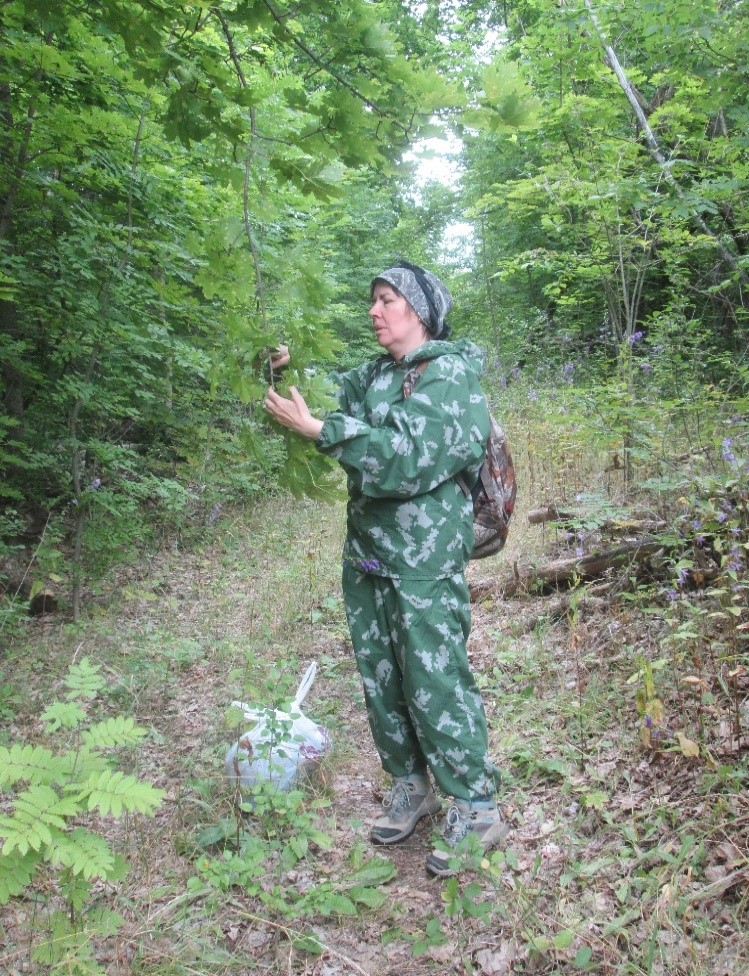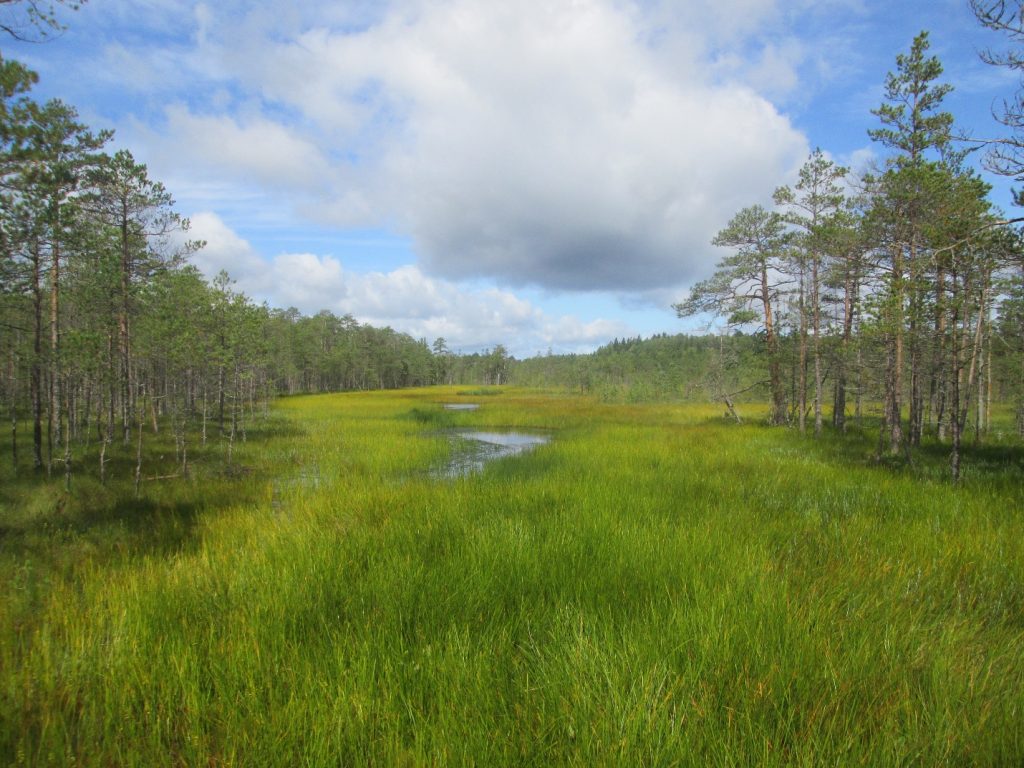International Co-operative Programme on Integrated Monitoring of Air Pollution Effects on Ecosystems (ICP IM)

is one of the international monitoring programs carried out under the auspices of the Convention on Long-Range Transboundary Air Pollution (1979) of the United Nations Economic Commission for Europe (UNECE), in the implementation of which the Russian Federation takes part.
Integrated ecosystem monitoring involves simultaneous measurement of the physical, chemical and biological properties of ecosystems within a watershed to identify trends in their changes in time and space. An integrated approach is necessary to identify the negative impacts of pollution on ecosystems and understand the mechanisms of these impacts; A diagram of the main monitored processes is presented in Figure 1.

This approach is based on the interconnection of all components of the ecosystem. For example, although acid precipitation enters the soil, its effects can most easily and clearly be monitored by the vegetation growing on it or the composition of drainage water. The program pays particular attention to regional differences in the effects of air pollutants, especially nitrogen and sulfur compounds, ozone and heavy metals on biota.
The main goals of SME CM are:
– monitoring the state of ecosystems and identifying the relationship between their state and environmental factors in order to provide a scientific basis for controlling emissions of pollutants;
– construction of ecosystem simulation models, assessment and forecast of changes in the state of ecosystems under the influence of changing levels of environmental pollution;
– identification of anthropogenic trends in the state of ecosystems.
Measurements and observations within the framework of abiotic and biotic subprograms of SME CM are carried out according to the methods collected in the Manual (Manual for Integrated Monitoring,
https://archive-harvest.slu.se:8443/jspui/bitstream/20.500.12703/3989/1/IM_Manual_edition_7.pdf).
At different stations in different years, various subprograms are carried out from those prescribed in the Manual. Information in electronic form is accumulated in national SME KM centers responsible for collecting data within countries, and is then sent to the International Environmental Data Center (IDEC), organized at the Swedish University of Agricultural Sciences (SLU). This information is located at: https://www.slu.se/en/Collaborative-Centres-and-Projects/integrated-monitoring/.
In the Russian Federation, the Federal State Budgetary Institution “IGCE” is responsible for the implementation of SME CM. (http://www.igce.ru/performance/international/icp-im/). The institute has established a National Scientific Coordination Center (NSCC) for SME CM
The NNCC includes the following IGCE employees:


 Leading researcher, candidate of biological sciences Paramonova T.A.
Leading researcher, candidate of biological sciences Paramonova T.A. Head of the department Pozdnyakova E.A.
Head of the department Pozdnyakova E.A.

NNCC provides coordination and methodological management of work on the network of SME CM hospitals. The responsibilities of the NNCC include collecting data from the network, conducting model calculations, identifying and analyzing trends, as well as submitting research results to the International Data Center. To solve these problems, a National Database was organized at IGKE, which allows storing descriptions of biogeocenoses and the results of field measurements for each hospital, converting primary data into standard formats of the CDOS database, and also carrying out primary statistical processing of data.
SME CM is carried out on a network that includes the following hospitals:
“Krasnaya Polyana” (Caucasian State Natural Biosphere Reserve);
“Danki” (Prioksko-Terrasny State Natural Biosphere Reserve);
“Damchik” (Astrakhan State Natural Biosphere Reserve);
“Lesnoy” (Central Forest State Natural Biosphere Reserve);
“Voronezh” (Voronezh State Natural Biosphere Reserve);
“Cape Kindo” (buffer zone of the Kandalaksha State Natural Biosphere Reserve; state natural complex landscape reserve “Polar Circle”);
“Kursky” (protection zone of the Central Black Earth State Natural Biosphere Reserve);
“Forestry” (Arboretum of the Mytishchi branch of MSTU named after N.E. Bauman).
The materials obtained during the implementation of SME CM at hospitals in the Russian program network are used in the preparation of scientific articles and publications, and are included in reports and in the “Review of the state and pollution of the environment in the Russian Federation…”.
Our scientific partners, who have entered into agreements with IGKE on scientific cooperation for the implementation of the SME SMEs, are:
- Belomorsk Biological Station named after. ON THE. Pertsov Faculty of Biology, Moscow State University. M.V. Lomonosov (BBS) (http://www.wsbs-msu.ru/);
- Arboretum of the Mytishchi branch of MSTU named after. N.E. Bauman (https://mf.bmstu.ru/info/dendrosad/);
- FGBUN “Institute of Geography RAS” (Kursk Biological Station IG RAS (KBS) (http://kursk.igras.ru);
- Российский химико-технологический университет им. Д.И. Менделеева (РХТУ) (https://www.muctr.ru/);
- Central Forest State Natural Biosphere Reserve (CLGZ) (http://www.clgz.ru).
On the territory of the Belomorsk Biological Station named after. ON THE. Pertsov Faculty of Biology, Moscow State University. M.V. Lomonosov (BBS) (buffer zone of the Kandalaksha State Natural Biosphere Reserve; state natural complex landscape reserve “Polar Circle”) established the SME KM “Cape Kindo” station (international number RU16). Measurements and observations on biotic subprograms are carried out in the boreal ecosystems of the reserve.



In the arboretum of the Mytishchi branch of MSTU named after. N.E. Bauman, the trial plots of the SME KM station are located in landscape gardening phytocenoses typical of the Moscow region, including both nemoral-boreal flora and introduced species.




The author of the photographs is a professor of the LT1 department of the Mytishchi branch of MSTU. N.E. Bauman Savchenkova V.A.
At the Kursk Biological Station of the Institute of Geography of the Russian Academy of Sciences (KBS) of the Federal State Budgetary Institution of Science “Institute of Geography of the Russian Academy of Sciences”, the SME KM “Kursky” station (International number RU47) was founded. The object of observation within the framework of the subprograms here are forest-steppe biogeocenoses.

At the Russian Chemical-Technological University named after. DI. Mendeleev (RKhTU) to carry out measurements on the SME CM, in accordance with the agreement on scientific cooperation between IGKE and RKhTU, an Inter-Institute Laboratory operates under the leadership of Associate Professor, Ph.D. AND ABOUT. Tikhonova.




The author of the photographs is Associate Professor of the Russian Chemical Technical University I.O. Tikhonov.
The station of SME KM “Lesnoy” (international number RU13) operates in the Central Forest State Natural Biosphere Reserve (CLGZ). The ecosystems of the reserve are coniferous-deciduous southern taiga primary forests on the moraine watershed plains of the center of the Russian Plain.






